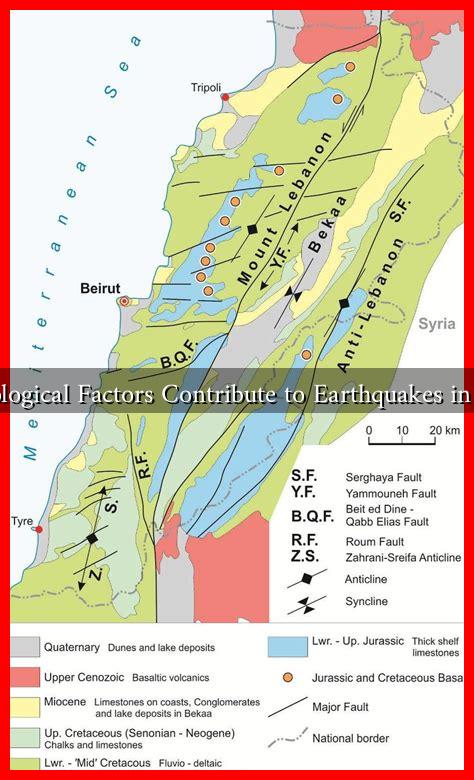-
Table of Contents
What Geological Factors Contribute to Earthquakes in Lebanon?
Lebanon, a small yet strategically located country in the Middle East, is no stranger to seismic activity. The region’s complex geological framework makes it particularly susceptible to earthquakes, which can have devastating effects on its population and infrastructure. Understanding the geological factors that contribute to these seismic events is crucial for disaster preparedness and risk mitigation. This article delves into the key geological factors that influence earthquakes in Lebanon.
The Tectonic Setting of Lebanon
Lebanon is situated at the convergence of several tectonic plates, primarily the Arabian Plate and the Eurasian Plate. This tectonic setting is characterized by significant geological activity, which is a primary driver of earthquakes in the region.
- Transform Boundaries: The most notable fault line in Lebanon is the Dead Sea Transform (DST) fault system, which runs along the eastern border of the country.
. This transform fault is responsible for horizontal movement between the Arabian and Eurasian plates, leading to frequent seismic activity.
- Subduction Zones: While Lebanon is not directly on a subduction zone, the tectonic interactions in the surrounding regions, such as the Hellenic Arc to the northwest, can influence seismic activity in Lebanon.
Historical Context of Earthquakes in Lebanon
Lebanon has a long history of seismic events, with records dating back to ancient times. Some significant earthquakes include:
- 1759 Earthquake: This earthquake, which struck the city of Beirut, is estimated to have had a magnitude of 7.5 and caused widespread destruction.
- 1999 Earthquake: A magnitude 5.6 earthquake hit the region, causing damage to buildings and infrastructure, highlighting the ongoing seismic risk.
According to the Lebanese National Center for Geophysics, the country experiences an average of 10-15 minor earthquakes annually, with larger events occurring less frequently but with potentially catastrophic consequences.
Geological Features Contributing to Seismic Activity
Several geological features contribute to the seismicity of Lebanon:
- Fault Lines: The presence of numerous active fault lines, including the Yammouneh and Roum faults, increases the likelihood of earthquakes. These faults are capable of generating significant seismic events.
- Geological Composition: The geological makeup of Lebanon, which includes limestone, sandstone, and other sedimentary rocks, can influence how seismic waves propagate through the earth, affecting the intensity of shaking experienced during an earthquake.
- Topography: The mountainous terrain of Lebanon can amplify seismic waves, leading to more intense shaking in certain areas, particularly in urban centers like Beirut.
Impact of Earthquakes on Lebanon
The impact of earthquakes in Lebanon can be severe, affecting not only the physical landscape but also the socio-economic fabric of the country. Key impacts include:
- Infrastructure Damage: Earthquakes can lead to the collapse of buildings, bridges, and roads, disrupting transportation and communication networks.
- Human Casualties: The loss of life and injuries resulting from seismic events can be devastating, particularly in densely populated urban areas.
- Economic Consequences: The cost of rebuilding and recovery can strain national resources, impacting economic stability and growth.
Preparedness and Mitigation Strategies
Given the geological factors contributing to earthquakes in Lebanon, it is essential to implement effective preparedness and mitigation strategies. These may include:
- Building Codes: Enforcing strict building codes that require earthquake-resistant designs can significantly reduce damage during seismic events.
- Public Awareness Campaigns: Educating the public about earthquake preparedness and response can save lives and minimize injuries.
- Seismic Monitoring: Investing in advanced seismic monitoring systems can help predict and respond to earthquakes more effectively.
Conclusion
Lebanon’s geological landscape, characterized by its tectonic setting and active fault lines, makes it highly susceptible to earthquakes. Understanding these geological factors is crucial for developing effective preparedness and mitigation strategies. By learning from historical events and investing in infrastructure and public awareness, Lebanon can better protect its population and minimize the impact of future seismic events. As the country continues to navigate its complex geological challenges, a proactive approach to earthquake risk management will be essential for ensuring safety and resilience.
For more information on earthquake preparedness, visit the Ready.gov Earthquake Preparedness page.





